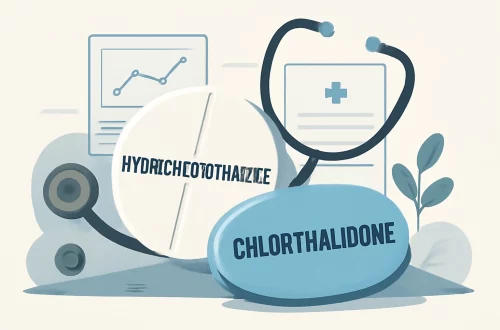
Understanding Tanning Bed Burns and How to Prevent Them
Tanning beds have become increasingly popular as a quick solution for achieving a sun-kissed glow, especially in regions where natural sunlight is limited. However, many users may not fully understand the risks associated with indoor tanning, particularly the potential for tanning bed burns. These burns can range from mild redness to severe blistering, causing discomfort and long-term skin damage. The allure of a bronzed complexion often overshadows the necessary precautions required to ensure safe tanning practices.
In this fast-paced world, where appearance can significantly impact self-esteem and social perception, the desire for a tan is understandable. Nevertheless, it is crucial to approach indoor tanning with caution and awareness. Tanning beds emit ultraviolet (UV) radiation, which can lead to adverse effects on the skin. The dangers of overexposure to UV light are well-documented, and burns are just one of the many consequences that can arise from improper use of tanning equipment.
Understanding the nature of tanning bed burns is essential for anyone considering this option for achieving a tan. By educating oneself about the risks and implementing effective prevention strategies, individuals can enjoy the benefits of indoor tanning while minimizing the potential for burns and other skin-related issues.
What Causes Tanning Bed Burns?
Tanning bed burns occur when the skin is overexposed to ultraviolet (UV) radiation emitted by tanning devices. These beds primarily emit UVA and UVB rays, which can penetrate the skin and damage its cellular structure. When the skin receives too much UV exposure, it reacts by becoming inflamed, resulting in redness, swelling, and pain.
The severity of tanning bed burns can vary based on several factors. Skin type plays a significant role; individuals with fair skin are more prone to burns than those with darker complexions. Additionally, the duration and intensity of exposure to the tanning bed can greatly influence the likelihood of experiencing burns. For instance, a longer session in a high-intensity tanning bed can lead to more severe burns than a brief session in a lower-intensity bed.
Another contributing factor is the use of tanning accelerators or oils. While these products are designed to enhance the tanning process, they can also increase the risk of burns by amplifying the skin’s sensitivity to UV radiation. It is essential for users to be aware of their skin’s tolerance to UV exposure and to understand that excessive tanning, whether indoor or outdoor, can lead to significant skin damage over time.
Moreover, the condition of the skin before tanning can affect burn risk. Skin that is already irritated, dry, or sunburned is more susceptible to further damage from tanning beds. Therefore, individuals should consider their skin’s health and hydration levels before using tanning beds.
In summary, tanning bed burns are a result of overexposure to UV radiation, influenced by factors such as skin type, exposure duration, and pre-existing skin conditions. By understanding these elements, individuals can take proactive steps to protect their skin and minimize the risk of burns.
Signs and Symptoms of Tanning Bed Burns
Recognizing the signs and symptoms of tanning bed burns is crucial for effective treatment and prevention. The initial reaction to overexposure to UV radiation typically manifests as redness in the affected areas, similar to a sunburn. This redness can appear within a few hours after tanning and may intensify over the next 24 to 48 hours.
In addition to redness, individuals may experience various levels of discomfort, ranging from mild sensitivity to severe pain. The skin may feel warm to the touch, and swelling can occur as a natural response to the injury. In more severe cases, blistering may develop, which indicates a deeper level of skin damage. Blisters can be painful and may lead to complications such as infection if not properly managed.
Peeling skin is another common symptom that may develop as the skin begins to heal. This process can take several days, and it is essential to avoid picking at the peeling skin to prevent further irritation and potential scarring.
In some cases, individuals may also experience systemic symptoms such as headaches, fever, or chills, particularly if the burn is extensive. These symptoms may indicate a more severe reaction and should be addressed promptly.
It is important to note that while mild burns can often be treated at home with over-the-counter remedies, more severe burns may require medical attention. If blisters develop, or if there is significant pain, redness that spreads, or signs of infection, it is advisable to consult a healthcare professional for appropriate care.
In conclusion, recognizing the signs and symptoms of tanning bed burns is vital for prompt treatment and prevention of further damage. Being aware of how the skin reacts to UV exposure can help individuals make informed decisions about their tanning practices and prioritize skin safety.
Preventing Tanning Bed Burns: Essential Tips
Preventing tanning bed burns requires a proactive approach and adherence to best practices for safe tanning. Here are several essential tips to help minimize the risk of burns and ensure a more enjoyable tanning experience.
Firstly, it is crucial to assess your skin type and determine a safe tanning regimen. Individuals with fair skin or a history of skin sensitivity should limit their exposure time and opt for lower-intensity tanning beds. Furthermore, it is advisable to start with shorter tanning sessions, gradually increasing duration as your skin acclimates to UV exposure.
Secondly, using protective eyewear is essential when using tanning beds. The UV rays can cause significant damage to the eyes, leading to conditions such as cataracts or photokeratitis. Proper goggles designed for tanning should be worn to shield the eyes from harmful radiation.
Additionally, avoid using tanning accelerators or oils that can increase skin sensitivity. Instead, opt for moisturizers that hydrate the skin before and after tanning. Hydrated skin is less likely to burn and more likely to achieve an even tan.
Pay attention to the condition of your skin before tanning. If you have any existing sunburns, irritated skin, or medical conditions, it is best to postpone your tanning session until your skin is in optimal condition.
Moreover, follow the tanning salon’s guidelines and recommendations. Professional tanning salons typically provide information on safe tanning practices, including recommended exposure times and bed settings based on your skin type.
Lastly, listen to your body. If you start to feel discomfort during a tanning session, it is essential to stop immediately. Ignoring signs of pain can lead to more severe burns and long-term skin damage.
By implementing these preventive measures, individuals can enjoy the benefits of tanning beds while significantly reducing the risk of burns and ensuring a healthier tanning experience.
Aftercare for Tanning Bed Burns
Proper aftercare is vital for anyone who has experienced tanning bed burns. Following the right steps can aid in healing and minimize discomfort.
Firstly, it is important to cool the affected areas. Applying a cool compress or taking a cool shower can help alleviate pain and reduce inflammation. Avoid hot showers or baths, as they can exacerbate the burning sensation.
After cooling the skin, it is essential to moisturize. Use a fragrance-free, gentle lotion or aloe vera gel to keep the skin hydrated. These products can soothe the skin and promote healing. However, avoid using products that contain alcohol or harsh chemicals, as these can further irritate the skin.
If the burn is more severe and blisters develop, it is crucial to avoid popping them. Blisters serve as a protective barrier for the underlying skin, and popping them can lead to infection. Instead, cover the area with a sterile bandage if necessary, and allow the blisters to heal naturally.
For pain relief, over-the-counter medications such as ibuprofen or acetaminophen can be taken as directed. If pain persists or worsens, consulting a healthcare professional is advisable.
Additionally, protect the burned area from further UV exposure while it heals. This means avoiding tanning beds and direct sunlight until the skin has fully recovered.
Finally, monitor the burn for any signs of infection, such as increased redness, swelling, or discharge. If any of these symptoms occur, seek medical attention promptly.
In conclusion, effective aftercare is crucial for managing tanning bed burns and ensuring a swift recovery. By taking the necessary steps to care for the skin, individuals can minimize discomfort and promote healing, allowing them to return to their tanning routine safely.
**Disclaimer:** This article is not intended as medical advice. If you have health concerns or experience significant skin issues, please consult with a qualified healthcare professional.




